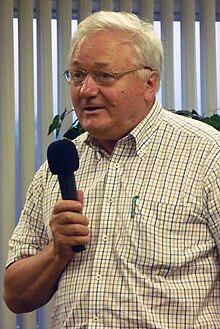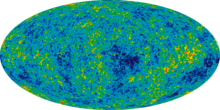Rashid Sunyaev | |
|---|---|
 Sunyaev in 2010 | |
| Born | (1943-03-01) 1 March 1943 (age 81) Tashkent, Uzbek SSR, Soviet Union |
| Nationality | Russian, German |
| Alma mater | Moscow Institute of Physics and Technology (MS), Moscow State University (Ph.D) |
| Known for | Cosmic microwave background radiation |
| Awards | King Faisal International Prize for Physics (2009), Heineman Prize (2003), Crafoord Prize (2008), Kyoto Prize (2011), Dirac Medal, ICTP (2019), Max Planck Medal (2023) |
| Scientific career | |
| Fields | Astronomer |
| Institutions | Russian Academy of Sciences, Max Planck Institute for Astrophysics, Institute for Advanced Study |
| Part of a series on | ||||
| Physical cosmology | ||||
|---|---|---|---|---|
 | ||||
| ||||
|
Early universe
|
||||
|
Expansion · Future
|
||||
|
Components · Structure
|
||||
|
Experiments
|
||||
|
Subject history
|
||||
| ||||
|
Rashid Alievich Sunyaev (Tatar: Рәшит Гали улы Сөнәев, Russian: Раши́д Али́евич Сюня́ев; born 1 March 1943 in Tashkent, USSR) is a German, Soviet, and Russian astrophysicist of Tatar descent. He got his MS degree from the Moscow Institute of Physics and Technology (MIPT) in 1966. He became a professor at MIPT in 1974. Sunyaev was the head of the High Energy Astrophysics Department of the Russian Academy of Sciences, and has been chief scientist of the Academy's Space Research Institute since 1992. He has also been a director of the Max Planck Institute for Astrophysics in Garching, Germany since 1996, and Maureen and John Hendricks Distinguished Visiting Professor in the School of Natural Sciences at the Institute for Advanced Study in Princeton since 2010. In February 2022, he signed an open letter from Russian scientists and science journalists condemning Russia's invasion of Ukraine.